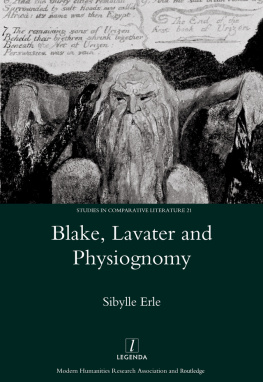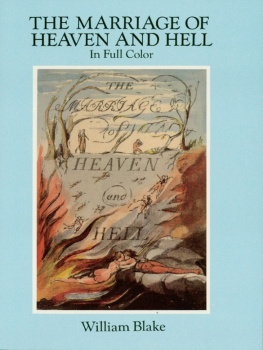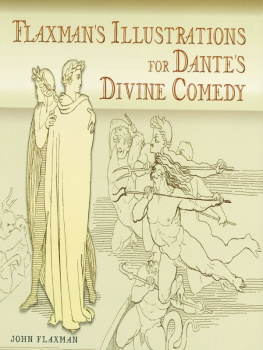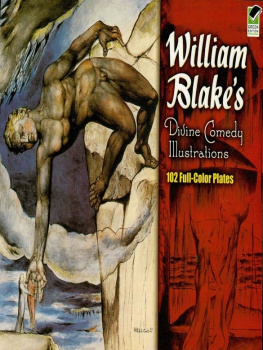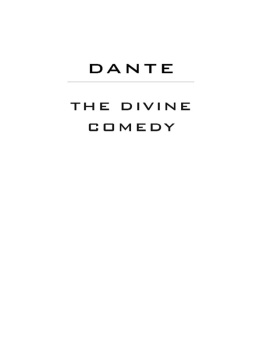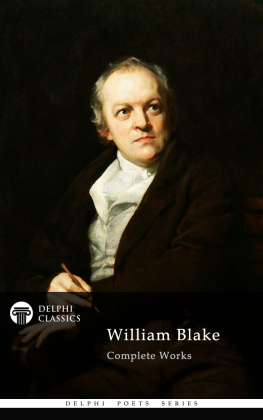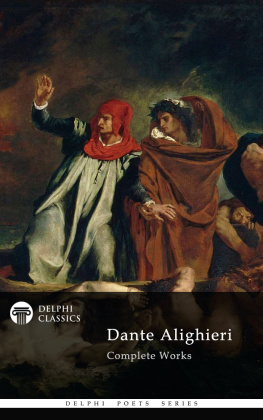
William Blakes Illustrations for Dantes Divine Comedy
A Study of the Engravings, Pencil Sketches and Watercolors
Eric Pyle

McFarland & Company, Inc., Publishers
Jefferson, North Carolina
LIBRARY OF CONGRESS CATALOGUING DATA ARE AVAILABLE
BRITISH LIBRARY CATALOGUING DATA ARE AVAILABLE
e-ISBN: 978-1-4766-1702-2
2015 Eric Pyle. All rights reserved
No part of this book may be reproduced or transmitted in any formor by any means, electronic or mechanical, including photocopyingor recording, or by any information storage and retrieval system,without permission in writing from the publisher.
On the cover: William Blake, Capaneus the Blasphemer, pen and ink and watercolor, 182427 (National Gallery of Victoria, Melbourne, Felton Bequest, 1920 [997-3])
McFarland & Company, Inc., Publishers
Box 611, Jefferson, North Carolina 28640
www.mcfarlandpub.com
God Appears & God is Light
To those poor Souls who dwell in Night
But does a Human Form Display
To those who Dwell in Realms of day
Auguries of Innocence
Preface
Dear Sir
I am still far from recoverd & dare not get out in the cold air. Yet I lose nothing by it Dante goes on the better which is all I care aboutWilliam Blake
Do not think that I have come to abolish the Law or the Prophets; I have not come to abolish them but to fulfill them.Matthew 5:17
No thing can become manifest to itself without oppositionJacob Boehme
Among William Blakes last works was a series of illustrations to Dantes Divine Comedy. It was an ambitious project for a man of 67 to begin, and he didnt live to complete it. Even in its unfinished state, however, the series is a rich and fascinating work of art that can add to our understanding of Blakes philosophy and artistic goals, and be enjoyed for its strange beauty. The seven engravings from the set approach the same high quality as the more famous prints depicting the Book of Job, which were finished about the time that the Dante series was commissioned. In addition, we have 102 unique pencil sketches and watercolors, in various stages of completion. Some are merely rough outlines, but a few are paintings of such beauty that they rival the best of Blakes visual work. Many of them are rich in iconographic inventionenough to give us confidence that, true to form, Blake was not passively depicting Dantes words, but was engaged in intellectual and artistic dialogue with his Italian peer.
The only full-length analysis of the Dante series was published in 1953 by Albert S. Roe. It is my hope that the present book will reopen many of the questions about these pictures, point to new methods of interpreting them, and help them to gain a place in lists of William Blakes greatest accomplishments.
My analysis will focus largely on aspects of Blakes theology that are at odds with Dantes, and that moved Blake to illustrate the Comedy as a way of correcting or completing its message. We will see that Dante, true to his age, conceives of God as existing in a separate realm, far above our fallen world. Blake does not accept the idea of a God that is apart from mankind. Indeed, for Blake it is the false perception of separateness from God that is at the heart of so many of our woes.
This book also discusses Blakes views on the goals and possibilities of art, an aesthetic theory that derives in large part from his theological principle that God and man are not divided. Whereas Dante accepts the traditional Christian view that limited human reason is inadequate to understand God, and that human language lacks the power to describe Heaven, Blake sees such an admission as an unnecessary falling-short. The true prophet, for Blake, is a poet who makes God manifest, either in words or in pictures. Blake rejects Dantes repeated claims that human art is inadequate to show Gods full majesty and works to realize in fullness the message that the Italian poet found impossible to convey.
Earlier interpretations of Blakes Dante pictures, following Roes analysis, saw the entire series as an attempt to show that the Comedy is false and that Dantes theology was inherently flawed. My book, on the other hand, will show that there are major points of agreement between the two poets. It is primarily in Dantes final inability to manifest God that Blake sees a failure. Blakes illustrations, then, were not made to abolish the Comedy, but to fulfill it.
I am of course aided in my task by the 60 years of advancement in the field of Blake studies since Roes book appeared. Even a much abbreviated list of those who have published since 1953 would have to include Kathleen Raine, George Mills Harper, and Desiree Hirst, who have revealed to us the esoteric and Neoplatonic background of Blakes thought. The British antinomian roots of his methods have been unveiled by E.P. Thompson. W.J.T. Mitchell showed us the inseparable nature of Blakes visual and verbal art, while David Erdman revealed its politics. Kathleen Lundeen brought Blake criticism up to date in regard to the world of semiotics and language theory. A fascinating triad of books has helped me understand the interplay of philosophy and theology that separates Blakes world from Dantes: Fischer, Magee, and Punter have, respectively, written books about Blake and Jacob Boehme, Jacob Boehme and Hegel, and Hegel and Blake. Robert Essick, author and editor of many key works of Blake scholarship, read portions of this manuscript and rescued me from several errors. I am grateful for his help. As much as I would like to blame any remaining errors on Satan, I must take personal responsibility for them here.
My goal in this book has been to discover the main artistic and theological aspects of Blakes engagement with Dante. In staying close to that theme, I have chosen not to attempt an exhaustive catalog of every Dante-related work in Blakes oeuvre. For a complete list of such works the reader is referred to the online Blake Archive, at www.blakearchive.org. This resource provides color reproductions of all the works discussed in the present book, as well as additional information on the provenance and present whereabouts of each. An inexpensive collection of reproductions is available from Dover Publications, titled William Blakes Divine Comedy Illustrations: 102 Full-Color Plates.
I am grateful to Professor Takao Aoki of Hiroshima University for assistance in securing the reproduction permissions necessary to complete this book. Sachiko and Aiko Ohnishi supported me in ways too numerous to name. I would also like to thank a number of pseudonymous friends with whom I conversed on the Internet, who provided me with moral support and valuable feedback during my years of research. And of course this book could not have been written without the patience and enthusiasmand good questionsof my students. Many thanks to all of you.
Color Illustrations
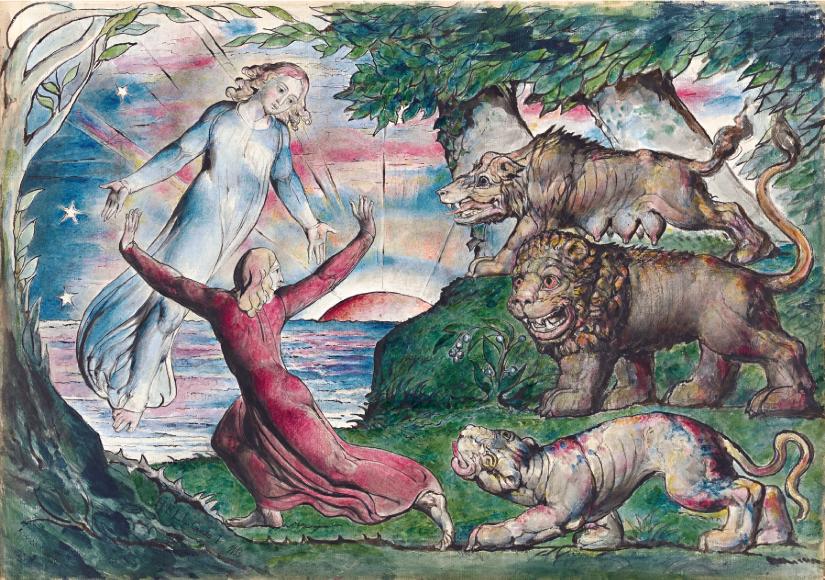
Figure 13.Dante Running from the Three Beasts, 182427, pen and ink and watercolor over pencil (National Gallery of Victoria, Melbourne, Felton Bequest, 1920 [9883]).
Next page

